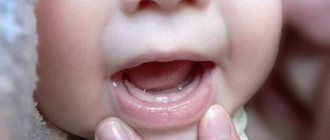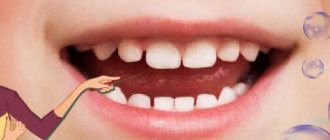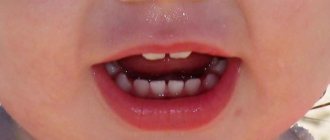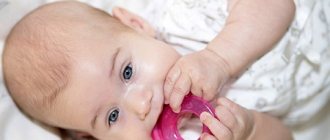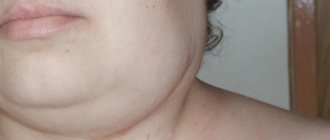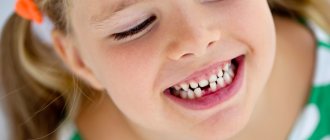The appearance of the first teeth
At what age do teeth begin to appear? Each baby is one and only. This applies not only to the attitude of parents and relatives towards him, but also to biological characteristics. The time when the first teeth appear depends on the following factors:
- Child's heredity. A baby born to young parents starts teething earlier than a baby born into an older family.
- Baby nutrition. Depending on the intake of necessary microelements (calcium, handicap) into the body with food, teeth will begin to erupt earlier or later.
- From the floor. Girls develop much faster than boys. Accordingly, their first tooth appears much earlier.
- Much depends on climatic conditions. In hot climates, the process can begin as early as two months of age.
Typically, the first tooth appears at 6–8 months, and the last pair of baby teeth at 2.5–3 years.
What else is important to remember
Over time, the primary teeth will replace the baby teeth. But dairy products are also important in the formation of skills such as chewing and speech. When the first teeth appear, the use of pastes and brushes for the smallest ones is allowed. The main thing is to choose the right accessories, depending on age.
Read also: Fangs are erupting
You need to make sure that your baby doesn’t fall asleep with a bottle. The liquid will act on the teeth for too long, which can cause them to break down later. This is especially true for mixtures containing sugar. Because of it, bacteria appear in the mouth, destroying the enamel. Then caries begins to appear.
It is better not to treat caries later, but to prevent its occurrence from the very beginning. A bottle as a pacifier is not the best solution for babies. He shouldn’t go to sleep with a bottle at all if there is not plain water inside it.
How many days does it take for children to erupt their first teeth?
The key to future dental health is not only the correct answer to the question of how long it takes for the first teeth to appear, but also regular oral hygiene.
The above figures are a general guideline. As already mentioned, this process is individual for everyone. And everyone is looking for their own answer to the question of how long it takes for a child’s first tooth to come in after erupting.
When do the first teeth appear?
As mentioned above, at the moment medicine cannot offer a single scheme for determining when teeth begin to cut. All children are unique. When the first teeth are cut, parents sound the alarm, because... this process is accompanied by the child’s nervousness. In this case, the baby can be either 4 or 7 months old. It is very important that by the age of one year the child has at least 2 milk teeth.
Don't expect other teeth to appear after the first one. Naturally, after the first tooth, the rest will gradually grow, but this can take one month or six months. The timing is purely individual.
Remember that all children develop differently. Don't compare them to each other. If one child develops faster than yours, this does not mean that yours is lagging behind in some way, that he is sick. If you have any concerns, just contact your pediatrician.
How to soothe teething pain
To ease the child's suffering, you can massage with something cool. Some people simply massage the gums with their fingers, but you should be careful so that the child does not bite the finger.
You can give him safe foods:
- Raw peeled carrots or frozen banana. Their long pieces easily reach the corners of the gums that hurt the most. But it is not worth leaving the child alone during this process, so that he does not choke.
- You can offer your baby a cold dessert spoon or a frozen cloth, which he will happily suck or chew. In addition, such unusual items will keep the baby busy for a long time.
- A refrigerated teether is also considered a good option .
Read also: How babies teeth erupt
Pharmacies have a large selection of gels that help with teething. They relieve pain because they contain lidocaine and menthol. But some children may have an allergic reaction to these components.
If gels and other remedies do not help and the child is in severe pain, you can give him a dose of paracetamol. It relieves pain quite effectively. But it’s better to play it safe and consult a doctor so as not to confuse any serious illness with the process of teething.
Each child experiences the teething process differently. But by the age of two and a half, 20 teeth should erupt. They will serve the child until he is six years old, and then a new stage will begin - the loss of milk teeth and the growth of permanent teeth.
Cutting sequence
The milk kit includes 20 teeth. By counting the number of spawns, you can easily find out how many are left to spawn. It is impossible to predict the time when the first tooth will appear, but it is very easy to determine which ones will appear first. This happens in a clear sequence.
Here is an approximate schedule and sequence in which the teeth will appear:
- First, the lower central incisors appear, this occurs at approximately 6–8 months;
- then the upper central incisors will erupt, at the age of 8–10 months;
- after them, the upper lateral incisors emerge, at 9–12 months;
- followed by the lower lateral incisors - at 11–14 months;
- then upper first molars at 12–15 months;
- after them, the lower first molars are cut almost immediately behind the upper ones, i.e. at 12–15 months;
- the penultimate canines erupt - at 18–22 months (first from above, then from below);
- and the last - the upper and lower second molars - at 24-32 months.
Interesting fact: this sequence is observed in all children, it is confirmed by pediatricians and fully reflects the real picture. But it is impossible to predict whether the right one or the left one will appear first.
Atypical cases
Many atypical timing of teething may be signs of certain pathological processes:
- if the first tooth appears two months ahead of time, this may indicate endocrine system disorders;
- if teeth erupted two months later than usual, you need to keep in mind the possibility of an infectious disease, metabolic disorder or dysfunction of the gastrointestinal tract;
- if a tooth does not erupt on the gum, then its axis is damaged;
- Sometimes babies are born with teeth that are removed to make breastfeeding easier.
Even in the above cases, you should not panic ahead of time. Take your child through a full course of examination, which is guaranteed to reveal all the abnormalities present in him or, conversely, confirm their absence.
Child's symptoms and behavior
How can you tell if your baby has started teething? Firstly, this can be determined by his behavior: the child becomes more and more restless, his behavior changes dramatically. Secondly, by external signs: the appearance of an easily noticeable hard red bump on the gum. But even without knowing about these two features, you definitely won’t miss the beginning of this period. Regardless of what time teeth begin to cut, this process is accompanied by a vivid clinical picture.
So, the main symptoms indicating that the baby is cutting a tooth:
- the temperature rises noticeably;
- salivation increases;
- gums turn red;
- a runny nose or cough appears;
- vomiting is possible;
- diarrhea or constipation;
- a rash appears on the cheeks.
As already mentioned, changes in the baby’s usual behavior are observed. These include:
- the baby is not at ease, he is constantly capricious, his behavior changes almost completely, sudden attacks of hysteria are possible, the child does not sleep well;
- when the teeth begin to cut, the baby pulls everything into his mouth, chews everything that comes to hand: toys, rattles, small objects, etc.;
- when the first teeth emerge, the gums swell significantly, and the germ of a tooth is visible in them;
- there is a sour smell from the mouth;
- cheeks slightly swollen;
- The baby loses his appetite.
These symptoms disappear after the first tooth appears. But when the second one begins to grow, they appear again. But don't let your guard down. With such a vivid clinical picture, which is observed when teeth come in, it is easy to overlook the symptoms of some disease.
Danger signs
Despite the fact that indigestion, fever, stuffy nose and cough are frequent accompaniments of teething, some doctors do not consider these symptoms to be so clear-cut. The explanation for this opinion is simple: the first years of a child’s life are marked not only by growing teeth, but also by a high risk of getting an infection. Therefore, ordinary diarrhea can be either a completely harmless “incident” or a manifestation of a dangerous disease. In this case, how can you understand that teeth are being cut and pathology is not making itself known?
Moist cough
When teething, symptoms such as excessive salivation and a slight cough are quite normal. Saliva collects in the throat area, and the lying baby wants to get rid of it by coughing. In a sitting position, a wet cough also appears, but much less frequently. It goes away in 2-3 days and does not require treatment.
It’s another matter when a child coughs heavily and often, and there is also excessive phlegm. The cough lasts more than 2 days and is accompanied by wheezing and shortness of breath, causing the baby to suffer. In this case, you should immediately contact your pediatrician.
Runny nose
During the teething period, the volume of mucus secreted in the nose increases. The mucus is clear, liquid and does not look painful. A slight runny nose that goes away in 3-4 days is normal. As a treatment, you can limit yourself to simply rinsing your nose to remove accumulated mucus.
Parents should be alerted to a profuse runny nose, which produces cloudy white or greenish mucus. If such nasal congestion does not go away within 3 days, you should consult a doctor.
Fever
Teething is accompanied by the active production of bioactive substances in the gum area. This process provokes an increase in temperature to 37-38 C for 1-2 days. Then the baby's condition returns to normal. The temperature is reduced with the help of antipyretic drugs that are harmless to children.
But sometimes the child’s well-being does not improve, and the temperature lasts more than 2 days. This is a serious reason to visit your doctor. A visit to the pediatrician is also required if the temperature rises above 39 C.
Diarrhea
The body noticeably increases salivation activity. Because of this, the baby constantly swallows saliva, which speeds up intestinal motility. The result is diarrhea, characterized by watery stools. The act of defecation in a child does not occur too often - 2-3 times a day. Diarrhea usually goes away within 2-3 days.
Important! You should consult a doctor if the diarrhea is prolonged, very frequent and intense, as it can provoke a state of dehydration that is dangerous for a small child. Parents should also be wary of mucus or blood in the stool.
Sometimes the opposite of diarrhea is a digestive disorder - constipation. It should not be allowed to last more than 3-4 days. It is necessary to discuss with your doctor how you can help your baby’s intestines cleanse.
Parents who observe symptoms of teething in infants for the first time should consult a pediatrician in all unclear situations. It is better to bother the doctor once again than to allow the child to develop the disease. With your second baby it will be much easier, and the signs of teething will not seem so scary.
Parents' actions
You need to start thinking about your child’s future teeth during pregnancy, since their foundation is laid at 3–4 months. You need to eat foods containing a lot of calcium more often: cottage cheese, liver, cabbage. Thanks to this, the baby's teeth will be strong enough.
And now begins the period when teeth come out. For many, this time is associated with a real nightmare. But knowing all the behavioral signs and symptoms of teething, you can help your child survive this age stage as comfortably as possible. It is necessary to monitor the baby’s condition very closely in order to provide him with all possible assistance in a timely manner. What can be done:
| Periodically massage your baby's gums. | To do this, you need to wash your hands thoroughly and carefully stroke the gums at the site of the tooth cutting. This must be done as carefully as possible so as not to damage the gums. |
| Use a teething toy. | This is a special accessory made of rubber, silicone or gel. There are a great many of them on sale. They are sold both in pharmacies and in specialized stores. |
| Use a cold compress to relieve pain. | The simplest compress can be made from a cotton napkin soaked in clean, cool water. Let your child play with it. He'll probably start chewing it. In addition to water, you can use chamomile decoction, which relieves the inflammatory process. You can also cool the teether or rubber pacifier slightly by briefly placing it in the refrigerator. |
These were ancient methods, tried and tested by generations. Today's medicine offers a number of means to alleviate unpleasant sensations for a child. Most are gels designed to be applied to the gums. They are absolutely safe and are sold in every pharmacy. Here are the most popular ones:
- Dentinox;
- Holisal;
- Kalgel;
- Kamistad;
- Panasoral.
Gels have no effect on the dental structure and its development. They relieve discomfort due to the presence of lidocaine and menthol in their composition. In some cases, they cause an allergic reaction, so you need to monitor the baby’s well-being. It is allowed to use the gel no more than 5 times for 3 days. The duration of its therapeutic effect is about 20 minutes.
Attention! Since the child “tastes” everything, you need to remove all small objects that he can reach, and regularly disinfect toys.
If your child periodically experiences severe pain, you can contact your doctor and ask him to prescribe a pain reliever.
The appearance of teeth is a natural process. But parents are able to help their child cope with it as easily as possible. Warmth and attention are the key to a child’s well-being.
How to help your baby
We have found out that teething is a rather painful process that has unpleasant symptoms and consequences. Therefore, of course, there is no need to just sit and watch how the child suffers. We must help the child in every possible way to get through this difficult period in his life and make sure that he feels the least amount of discomfort.
Below I will give some recommendations; these are exactly what my wife followed when our child was teething, and it yielded results.
- As long as your child is constantly drooling, you need to stock up on bibs and change them periodically; they will get wet very quickly.
You can also wipe away drool with tissues around your baby's mouth and chin to avoid irritation. It is also necessary to remove from sight all objects that you would not want to see in your child's mouth. He will put everything in his mouth, so leave only the necessary toys and keep them clean.
- You can massage your child’s gums either directly with your finger, or you can do it with a bandage dipped in cold water. Directly wrap the bandage around your finger, and then dip it in some water and massage your gums.
- As soon as the child begins to be capricious, smear his gums with a special anesthetic gel. Such gels are designed specifically to relieve unbearable pain in a child’s gums; they do not cure anything. It is up to you to decide which gel to use. You can consult your pediatrician, or you can ask the pharmacy. We applied a gel called Comident.
Read the instructions exactly how many times you need to smear a day and after what period of time. There is no need to use the gel too often (not 10 times a day).
- Buy several teething toys. The baby will chew on them and at the same time scratch his gums on them. Children love teethers filled with water. They are soft plus they can be cooled in the refrigerator, and cold is known to relieve pain.
- When the child was completely capricious and could not sleep, we gave him a painkiller, Nurofen syrup. By the way, it is also an antipyretic. Therefore, if your baby has sore gums plus a fever, then Nurofen should help a lot. But again, don't overuse it. Give these drugs occasionally, not every day, and only if the baby begins to be very capricious.
- Just imagine, when the baby’s teeth finally come out, even these first two lower incisors already need to be looked after. Try to brush your baby's teeth every morning. To do this, you can use the same bandage wrapped around your finger. Soak it in boiled water and wipe your teeth.
There is also a more civilized method, this is the use of a finger attachment, which is designed specifically for cleaning the teeth of a newborn.
That's basically all for today. As soon as your baby turns three months old, prepare for the fact that his first teeth may appear at any moment.
Rules for caring for first teeth
When a child's first teeth appear, parents have more troubles. Only teeth that have erupted are easily susceptible to all negative influences, so they need to be looked after from the very first day.
The most important thing is that they need to be cleaned. Initially, a sterilized bandage or a special attachment on the finger is used for this. Then they gradually begin to use a soft baby brush with a paste rich in calcium and low in fluoride. The brush should be changed every month. Parents should brush the teeth of a child under 2 years old, doing it very carefully so as not to damage the thin layer of tooth enamel. After two years, you should gradually teach your child to do this himself, but under the supervision of one of the parents.
Help a child
To make the teething process less distressing and painful for children, parents can use a number of techniques:
- Teether toys. (The shell of the toothpick is silicone, there is distilled water inside. Before giving the toy to the baby, it is recommended to place it in the refrigerator. The cooled item will help the baby temporarily relieve itching and pain.)
- Cooling dental gels: homeopathic (based on medicinal herbs) and containing ice-caine, antiseptics. (They have an anti-inflammatory and antibacterial effect, eliminate itching and irritation in the gums.)
- Traditional medicine:
- a decoction of string, motherwort, sage or chamomile (you need to gently lubricate the child’s gums with this product to reduce inflammation and soreness)
- soda solution (has a disinfecting and anti-inflammatory effect)
- chicory and strawberry roots (Relieves pain and itching in the gums. Before giving the roots to the child to chew, they must be thoroughly cleaned and rinsed.)
- clove oil (diluted with olive oil in a ratio of 1.5:1 and lubricate the baby’s gums. The oil has an analgesic function)
- Solid foods: apples, carrots, cookies, dried fruits. (This method is only possible under adult supervision.)
- An elevated temperature can be brought down with vinegar (vinegar compresses, socks), homeopathic Viburkol suppositories, paracetamol-based suppositories (Efferalgan, Tseffekon D, Panadol), Nurofen syrup.
- In case of diarrhea and vomiting, it is necessary to offer the baby warm drinks as often as possible to avoid dehydration and restore the baby’s strength.
Read also: Five teeth in children
All of the above methods are aimed at alleviating the baby’s condition. But the best medicine for the baby will be the tender care and attentive attitude of the parents, their affectionate hugs and warm words. The child should feel that in difficult moments, dad and mom will always be there and can always help.



